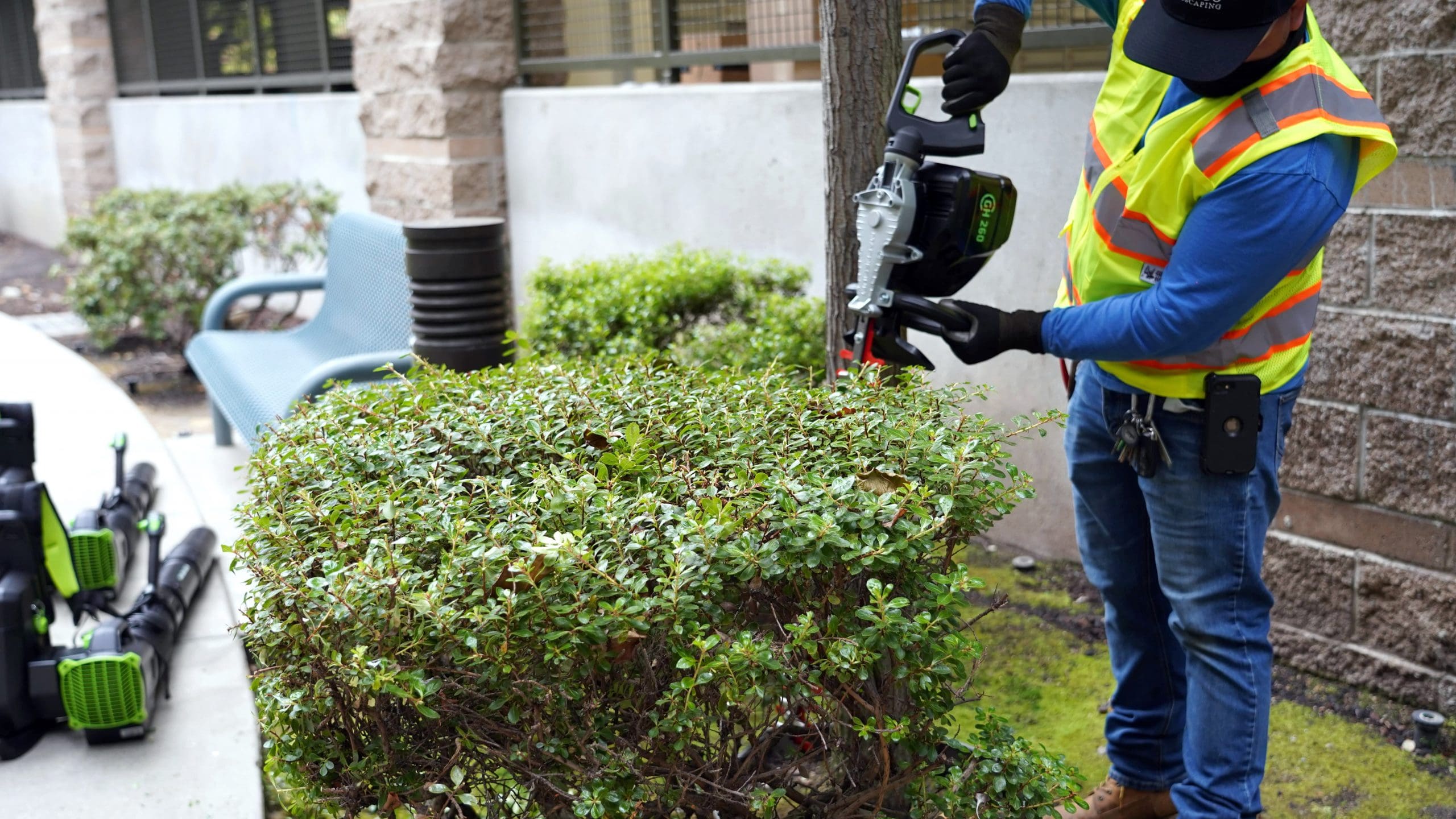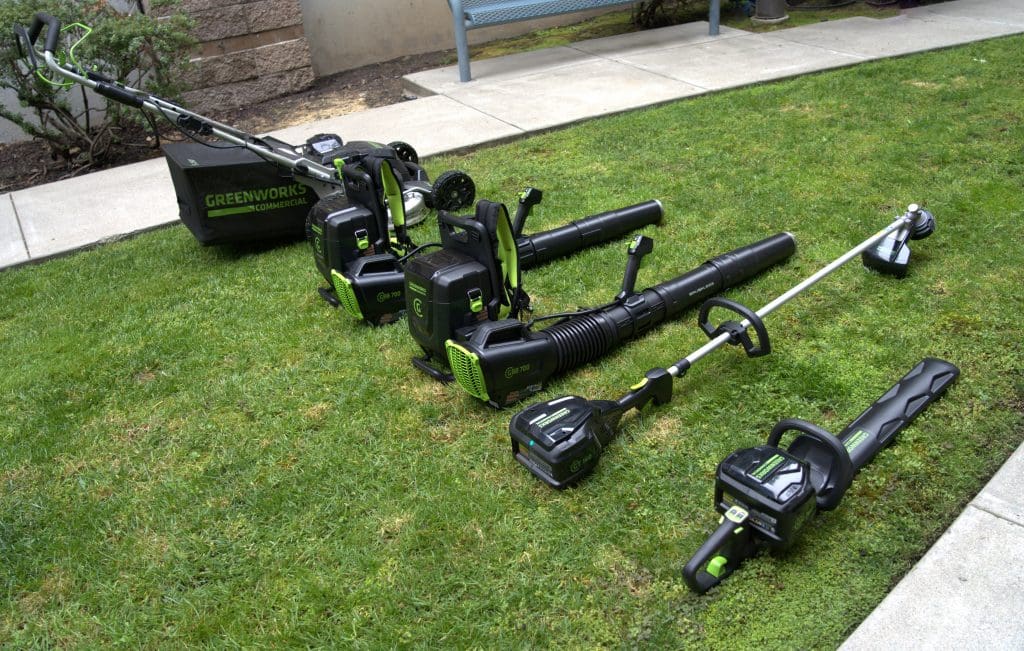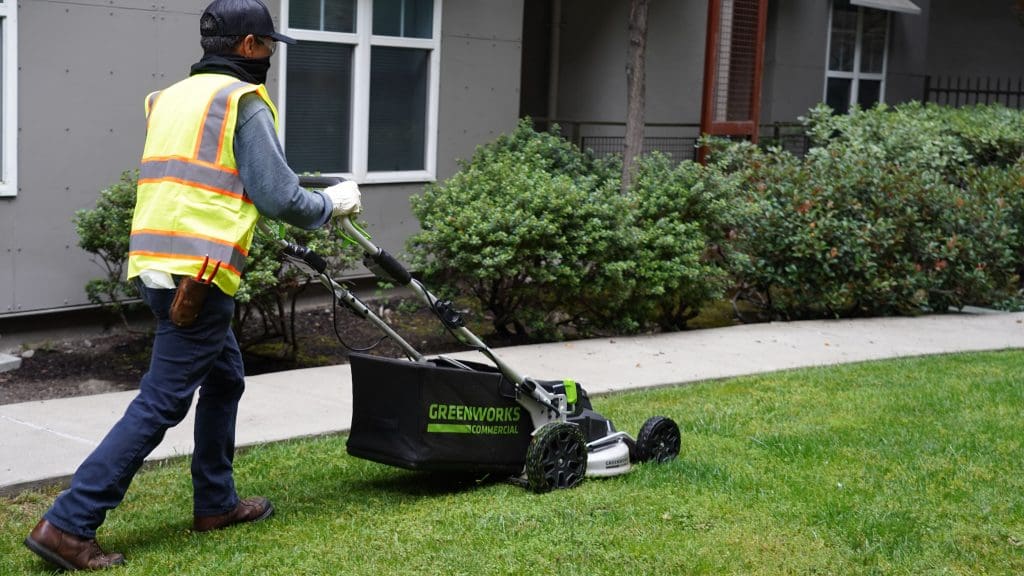
One of Serpico’s founding core values is resource conservation and it guides how they approach every large undertaking. Their latest effort is the shift to 100 percent hybrid-electric-powered landscape maintenance by 2028. Their hybrid-electric routes will be identified as “Green Power+” which includes battery-powered equipment and hybrid-electric Ford F-150 Powerboost trucks.
“We look for ways to have a more meaningful share in conserving resources and this was one of the huge ways we felt we could have an impact on our area of the planet and the industry at the same time,” says Peter Novak, president and CEO of the Hayward, California-based company.
Aside from resource conservation, Novak says some of the secondary driving factors in this decision include eliminating fuel costs and fuel dependency, state legislation due to air quality and noise, and a desire to help lead the industry forward and raise the bar.
“We feel like ultimately this is the future,” Novak says. “So it’s either figure it out or slowly fade off into the past.”
Selecting a Battery Power Brand

While the shift may seem abrupt to outsiders, Novak says the company has been testing prototype battery equipment from every major manufacturer since 2016.
“The biggest thing around the industry was, ‘Yeah the handhelds work, but can the blowers last?’” Novak says. “Or they don’t blow hard enough, or they don’t blow fast enough. The CFM isn’t there. The velocity isn’t there.’ So anytime a manufacturer came out with a blower, we were using it in the field to see if it would work and ultimately, they all didn’t.”
Serpico also determined what the numbers, more than financial, would have to look like, in order to fully outfit a commercial/HOA maintenance crew at minimal-to-zero productivity impact. Novak says it was a complex ballet to get it right. They picked routes that best represented the daily work they do, and would test battery equipment on these routes.
“We figured out that we needed to get through, at minimum, three-quarters of a full day,” Novak says. “If we could accomplish 75 percent of our normal landscape maintenance services for that particular route on any given day, we knew that with this truck and the generator that’s in the back of it, that we could do on-road charging and then we could make up the remaining 25 percent of battery runtime, driving in between locations or driving to and from the yard rotations.”
They had to wait years for the technology to advance enough to where on-road charging capability, real-world battery run times and accompanying equipment unit costs met or exceeded the comparable legacy gasoline truck and equipment unit costs and performance. Novak says they hit this threshold in 2020 with Greenworks Commercial’s battery technology.
Novak says they can go the whole day now with the battery equipment, and the on-the-go charging is more of a safeguard.
“It just gives us another layer of ability that will down the road allow us to be more efficient in our service to the customer, more effective, and we’ll be able to respond in a better manner,” Novak says.
In the long run, Novak says he isn’t sure of the possibilities the on-the-go charging could provide but it might result in them being able to add an extra hour of service or another small stop because they don’t have to worry about having enough battery power.
Novak says they chose to partner with Greenworks due to their runtime and battery technology.
Recycling Batteries
One of the arguments against shifting to battery power is the fact the batteries often end up in landfills after they can no longer hold a charge.
“A lot of folks will argue ‘Well, is it really green? You’re essentially swapping out fossil fuels for lithium-ion production,” Novak says. “It’s a question that we had to give some thought and there are pushes and there are pulls, just like with everything.”

Novak says they have yet to run into drop-off with charging effectiveness to where it’s affected their ability to execute their service. He says they’re still using batteries they started using a year and a half ago.
The batteries they have had to recycle are mainly due to there being physical damage of the batteries. To date, they have recycled five percent of their battery packs annually. Serpico has partnered with EZ On The Earth to recycle their battery equipment.
“It is actually not as simple to recycle high wattage lithium-ion batteries as normal lithium batteries, and a smaller number of these providers exist in the States than you would imagine,” Novak says.
Serpico utilizes a non-standard robust insulated container to collect batteries as they reach their end of life. Once the container is full, they ship the pre-labeled container to EZ On The Earth and they auto-ship Serpico a new container. The special containers are insulated to prevent the risk of fire due to damage in transit.
Hybrid Trucks
Novak says while they are aware of the all-electric truck available from Ford, they decided to go with the hybrid option.

“We feel that, ultimately, the all-electric pickup truck will be a great consumer product,” Novak says. “It’s not going to be a commercial-grade work truck.”
The main problem they have is going with a truck that runs on batteries to power something else running on batteries. Novak says it’s a recipe for something to go horribly wrong if there aren’t enough batteries.
Another issue is the charging stations. While charging stations are easy to find in the Bay area, finding an open charger is a challenge.
“Even if you have to wait an hour or 45 minutes to charge your car once you’re plugged in you may wait an hour just to get that space, because somebody is charging right now,” Novak says. “It’s going to be a long time before this industry is powered by electric pickup trucks. We believe the next step is hybrid-electric.”
This article was published in the January/February issue of the magazine. To read more stories from The Edge magazine, click here to subscribe to the digital edition.

